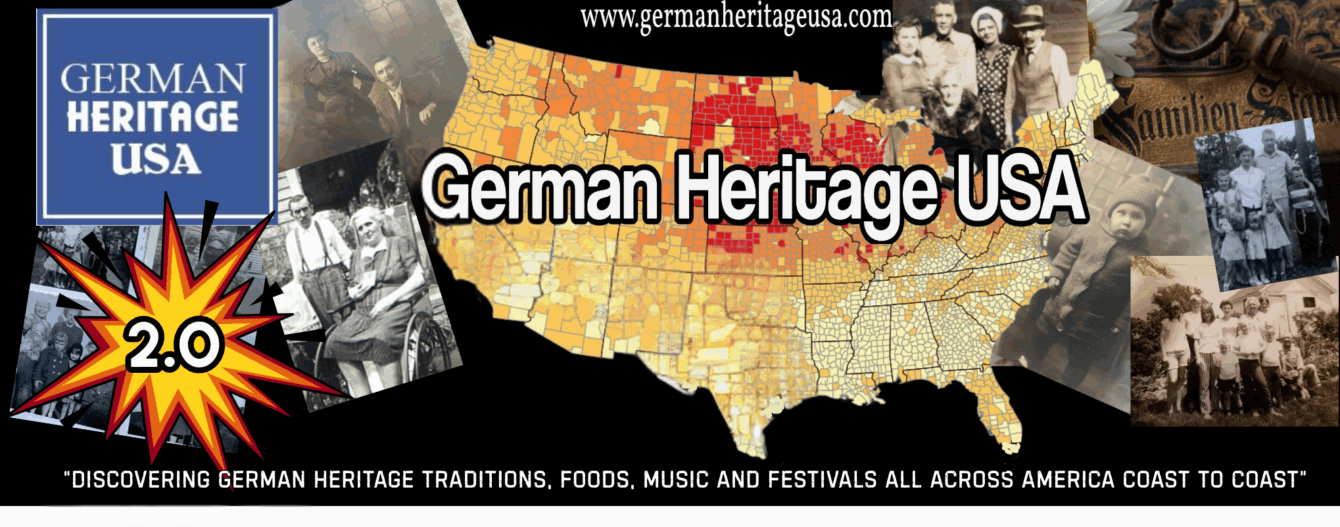How German New Year Traditions Made Their Mark in America
GERMAN HERITAGE USA | AFFILIATE DISCLAIMER: This post may or may not contain affiliate links which means we may receive a commission for purchases made through links. We will only recommend products that we have personally used or that we truly trust. Learn more on our Private Policy and Disclaimer Page located under our Terms Of Service tab above.
For many Americans, New Year’s Day evokes images of champagne toasts, football, and resolutions quickly forgotten. But delve deeper, and you might find surprising traces of a different cultural influence: Germany.
From festive foods to unique customs, German immigrants brought over centuries-old traditions that have subtly woven themselves into the fabric of American New Year’s celebrations.

In Germany, New Year’s Eve, known as “Silvester,” takes center stage. Unlike the quiet reflection often associated with January 1st in America, Silvester explodes with fireworks, joyous gatherings, and lively traditions.
Let’s explore some of the most prominent German customs and their journey across the Atlantic:
Glühwein into the New Year:
The aroma of warm, spiced mulled wine, known as Glühwein, is practically synonymous with German Christmas markets. But in Germany, this festive drink spills over into Silvester celebrations, warming hands and hearts as revelers gather outdoors.
While Glühwein hasn’t quite become a mainstream American New Year’s beverage, its influence can be seen in the growing popularity of mulled cider and other warm, spiced drinks during the winter holidays.
Relax with Gemütlichkeit at the Stammtisch:
Additionally, the concept of “Gemütlichkeit,” a German word encompassing coziness, warmth, and good company, resonates with the American desire for a comforting and festive atmosphere on New Year’s Eve.

Imagine kicking back with friends, laughter filling the air as warmth radiates from a crackling fireplace. This feeling, this atmosphere – that’s the magic of “Gemütlichkeit,” a German word that somehow captures coziness, friendly vibes, and a good dose of warmth all in one. Sounds pretty darn appealing, right? Well, guess what? This delightful concept resonates deeply with Americans too!
Across the USA, German heritage communities are channeling their inner Gemütlichkeit by creating little pockets of cozy joy called “Stammtisch’s.” These gatherings, often held at restaurants, bars, or social clubs with a German flair, are all about embracing their German roots. Picture a room filled with lively conversations about family stories passed down through generations, traditions kept alive, and maybe even a few attempts at recipes.
But Stammtischs aren’t just about heritage; they’re open to anyone who wants a taste of that comforting Gemütlichkeit feeling. So, grab a stein, raise a toast to friendship, and get ready to experience a slice of German cheer in your own American town!
Bleigießen: Fortune Telling with Molten Lead:
This ancient tradition involved melting small lead figurines and pouring the molten metal into cold water, where it would solidify into unique shapes. These shapes were then interpreted to predict one’s fortunes for the coming year. While lead toxicity concerns have rendered this practice obsolete in Germany, its spirit lives on in American fortune cookies and other playful ways to glimpse into the future.
Raclette and Fondue:
A Melting Pot of Fun: Imagine gathering around a table, dipping bread, vegetables, and meats into bubbling cheese or hot oil – a delicious way to spend New Year’s Eve in Germany. Raclette and fondue parties have gained popularity in America, particularly in areas with significant German populations like Pennsylvania Dutch Country and the Midwest. These interactive dining experiences foster a sense of community and celebration, adding a unique twist to American New Year’s gatherings.
Dinner for One:
A Quirky Tradition: This British comedy sketch, depicting an elderly woman celebrating New Year’s Eve with her deceased butler, has inexplicably become a cherished tradition in Germany.
While its popularity might seem baffling to outsiders, it has transcended borders and found a niche audience in American cities with German cultural centers and communities.
Feuerwerk:
Lighting Up the Sky: Germans love their fireworks, and Silvester night explodes with a dazzling display of color and light. While Americans also enjoy fireworks on New Year’s Eve, the scale and enthusiasm seem to hold a distinctly German flair. Cities with strong German heritage, like Milwaukee and Cincinnati, often hold large public fireworks displays, a testament to the enduring influence of this tradition.
Beyond Food and Festivities:
The impact of German immigrants goes beyond specific traditions. Their emphasis on punctuality, organization, and hard work helped shape American values, contributing to the nation’s work ethic and efficiency. Additionally, German caroling traditions, with their emphasis on four-part harmonies and traditional melodies, have influenced American Christmas carols.
Cities and States with a Strong German Influence:
States like Pennsylvania, Wisconsin, Minnesota, and Ohio have sizable German populations, and their cultural influence is evident in various aspects of life, including New Year’s traditions. Cities like Milwaukee, Cincinnati, Cleveland, and St. Louis often host German-themed New Year’s events, complete with food, music, and dancing. Additionally, German cultural centers and clubs across the country organize celebrations that keep these traditions alive for new generations.
Conclusion:
German New Year’s traditions may not dominate American celebrations, but their subtle influence is undeniable. From festive beverages to communal dining experiences, traces of German heritage can be found in various aspects of American New Year’s celebrations.
So, the next time you raise a glass or gather around a fondue pot on New Year’s Eve, remember that you might be participating in a centuries-old tradition that traveled across the ocean, bringing a touch of German cheer to your American celebration.
